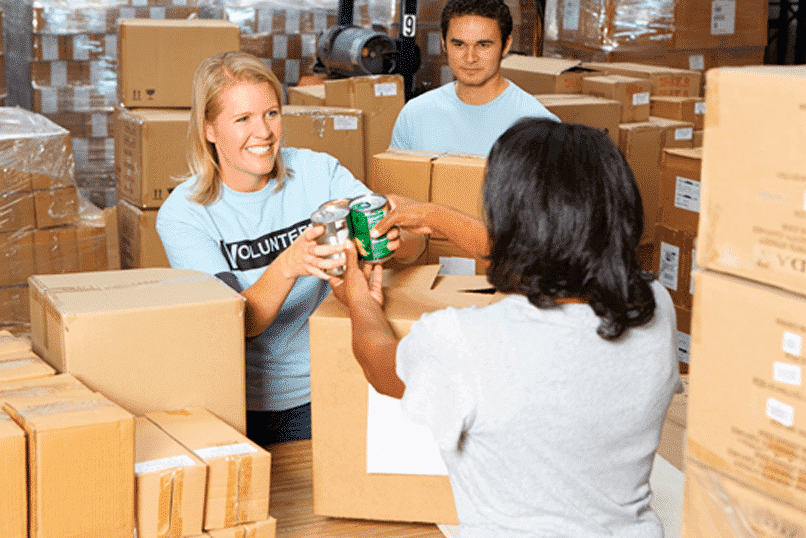In 2019, Community Action Services and Food Bank received 3,438,592 pounds of food donations. We distributed 3,425,528 pounds of food to people in need—10,614 families and 26,784 individuals. We also supplied backpacks full of food for weekends to 40,832 elementary school children. And we donated 89,772 pounds of food to local senior centers.
Where do we take and store donations, and how do we distribute it? The answer is we use a food bank and a network of food pantries in Utah, Wasatch, Summit, and Sanpete counties. So what’s the difference between a food bank and food pantry?
What’s a food bank?
A food bank is usually a large facility where a nonprofit receives and stores large amounts of food. (For example, more than 25 of the food banks associated with Feeding America are twice the size of a wholesale grocery store like Costco or Sam’s Club.) The nonprofit then distributes items from the food bank to food pantries or other food programs run by churches, schools, and other organizations.
A food bank only takes donations in large volumes. Usually, these types of large contributions come from grocery stores, businesses, or large food drives. So if you have a small donation, take it to the local food pantry, not the food bank. Our food bank—located at 815 S. Freedom Boulevard in Provo—receives donations Monday through Friday from 8 a.m. to 5 p.m. We always need canned meat, canned fruit, soups and stews, items for kids nutrition packs, hygiene items, and more. Since ours is a combination food bank and pantry we will accept donations from a single can to a truckload. We also take after-hours donations through the chute by the warehouse doors.
What’s a food pantry?
While a food bank is like a large storage and distribution center, a food pantry is more like a grocery store. People in need go to the pantry, shop, and leave with food and other items. Its staff stocks shelves with small-scale donations from the community—individuals and businesses—as well as items distributed from the food bank with which it’s associated.
When people arrive at our food pantry, a trained counselor reviews their budget. Then they can shop from items on the pantry’s shelves. We operate food pantries in Provo, Heber, Kamas, and Coalville as well as at Utah Valley University in Orem, Wasatch High School in Heber, Independence High School in Provo, and Sanpete County.
Our most-needed items at the food pantry are precisely the same as the food bank. We need canned meat, canned fruit, soups and stews, items for kids nutrition packs, hygiene items, and more. We accept donations at pantries Monday through Friday, 8 a.m. to 5 p.m. For pantry locations, go here.
Both food pantries and food banks exist to help people in need, but they each serve different functions. In a nutshell, a food bank is a warehouse from which nonprofits distribute food while a food pantry is similar to a grocery store for people in need. Working together, we can eliminate hunger in our community. For more information about our food bank and food pantries, and how you can help us improve our community, go to https://casfb.wpengine.com/food/.

